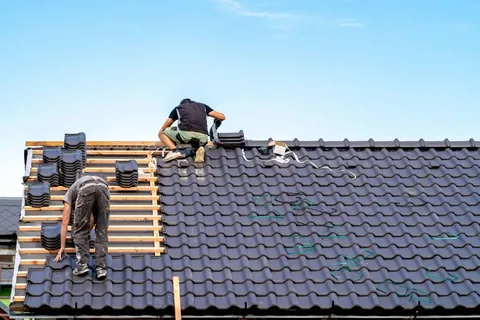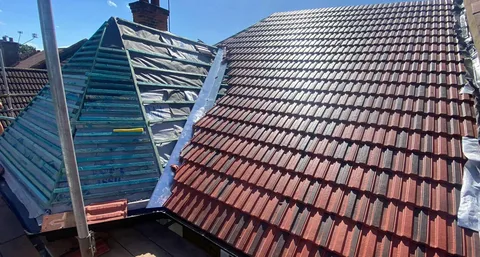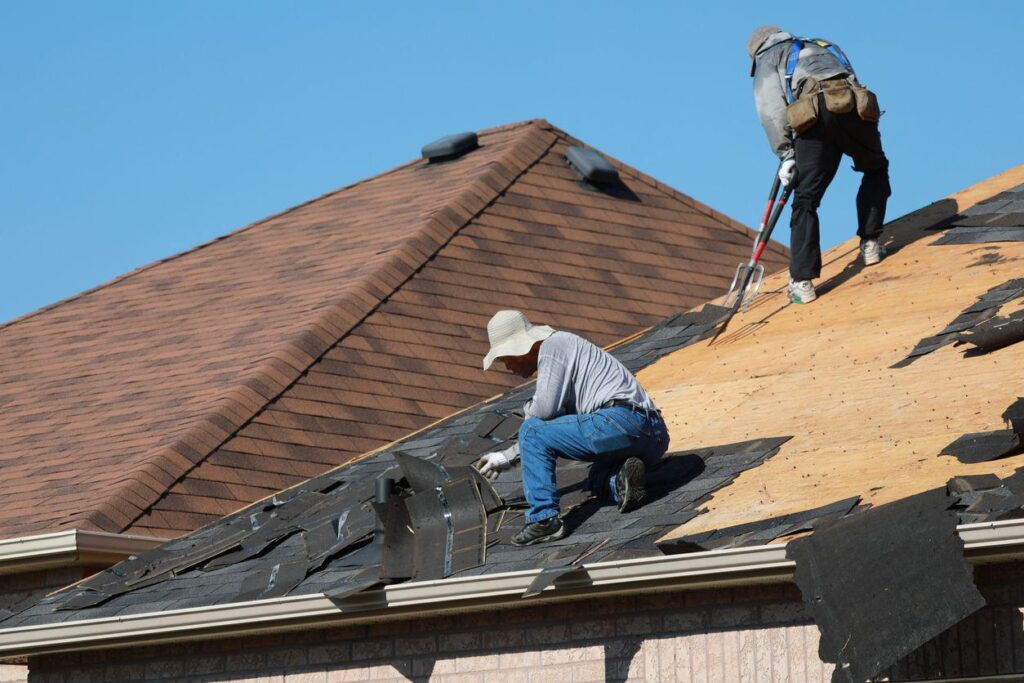Roof repairs are a vital part of keeping your home safe, dry, and energy-efficient. Whether you’re dealing with a leaky roof, storm damage, or worn-out shingles, getting your roof fixed promptly can prevent much bigger (and more expensive) problems down the road. But before the contractors arrive, there are some important steps you can take to make the process smoother—for you, your family, and your roofing crew.
In this guide, we’ll walk you through how to prepare your home for roof repair so everything goes off without a hitch.
Why Preparation Matters Before Roof Repair
Preparing your home in advance helps:
- Keep your family safe during construction
- Minimize disruptions inside the home
- Protect valuable belongings from dust, debris, or accidental damage
- Help your roofing contractor work more efficiently
Whether you’re tackling a minor leak or a full-scale roof overhaul, a little prep can save you a lot of stress.
Clear Communication with Your Roofing Company
Before any work begins, talk to your roofing contractor about
- The start date and estimated timeline
- What areas of the house may be impacted
- Parking needs or space for a dumpster
- Noise levels and working hours
- Access points to the attic or other areas
Clear expectations will keep surprises to a minimum and ensure everyone is on the same page.
Preparing the Inside of Your Home
Secure Items on the Walls and Ceilings
Roof work often creates strong vibrations that can shake your walls. Take down:
- Picture frames
- Mirrors
- Hanging artwork or decor
This prevents items from falling or getting damaged during construction.
Protect the Attic
Your attic will be closest to the roofing work. Cover stored items with plastic sheeting or drop cloths to shield them from dust and falling debris.
Move Items from Under Skylights
If you have skylights, clear the area underneath them. Dust and debris may fall through or collect around the edges.
Secure Fragile Items
On shelves or in cabinets, vibrations can cause breakables to shift. Either pack them away or add padding to keep them from sliding around.
Preparing the Outside of Your Home
Move Vehicles Out of the Way
Roofing work may require space for trucks, trailers, or dumpsters. Move cars away from the driveway and curb to avoid damage from falling materials.
Protect Outdoor Furniture and Plants
Cover patio furniture, grills, and plants with tarps or move them to a safer location. Roof debris can easily fall into flower beds or garden areas.
Mark Sprinklers and Landscape Features
Let your roofer know about any sprinkler heads, fountains, or hidden landscaping elements that should be avoided while setting up ladders or scaffolding.
Consider Kids and Pets
Safety First
Roofing can be loud, messy, and potentially hazardous. If possible, plan for pets or small children to stay elsewhere during the workday.
Noise Sensitivity
The noise of hammering, footsteps, and heavy materials overhead can be upsetting. Prepare your family by letting them know what to expect—and offer headphones or activities away from the noise.
Remove Antennas, Solar Panels, or Satellite Dishes
If you have solar panels, antennas, or satellite dishes on your roof, they may need to be removed temporarily. Talk to your service providers or ask your roofer if they can help coordinate this safely.
Provide Easy Access
Make sure gates are unlocked and outdoor power sources are available if needed. Clear paths to the roof or attic access points so your contractor can get in and out easily.
Plan for Clean-Up
Most professional roofers include debris removal as part of their service. Still, it’s a good idea to:
- Confirm who’s responsible for cleanup.
- Ask about magnetic nail sweepers (used to collect stray nails from your lawn)
- Check that gutters and downspouts will be cleared after repairs
After the Roof Repair—What to Check
Once the work is done:
- Inspect your attic and living space for leftover debris or dust
- Check for any signs of water intrusion
- Ask your roofer to walk you through what was repaired or replaced
You should also review your warranty or ask for documentation of the repairs made.
Conclusion
Getting your roof repaired is a big step in protecting your home’s structure, value, and comfort. By preparing your space—both inside and out—you’ll make the process easier on everyone involved. With a few simple steps, you can reduce stress, avoid damage, and help your roofers do their best work.
So when the time comes for roof repair, don’t just hire the right contractor—set your home up for success too.
FAQs: Roof Repair Preparation
Q: Can I stay in my home during roof repairs?
Yes, in most cases it’s safe. However, be prepared for loud noises and vibrations. If you work from home or have pets or small children, you may want to make alternate arrangements during work hours.
Q: How long does a typical roof repair take?
It depends on the scope of the project. Small repairs may take a few hours, while major work could last several days.
Q: Will dust or debris get inside my home?
Some dust can enter through the attic or air vents. Covering stored items and sealing attic doors helps prevent this.
Q: Do I need to be home while the work is done?
Not usually, as long as your contractor has access to the necessary areas. Make sure you discuss any access or security concerns before the job starts.
Q: What should I do with my pets during roof repair?
Since roofing can be loud and disruptive, consider keeping pets indoors in a quiet room—or arrange for them to stay with a friend or at a pet daycare for the day.



